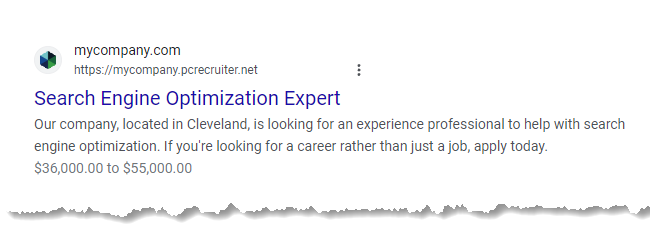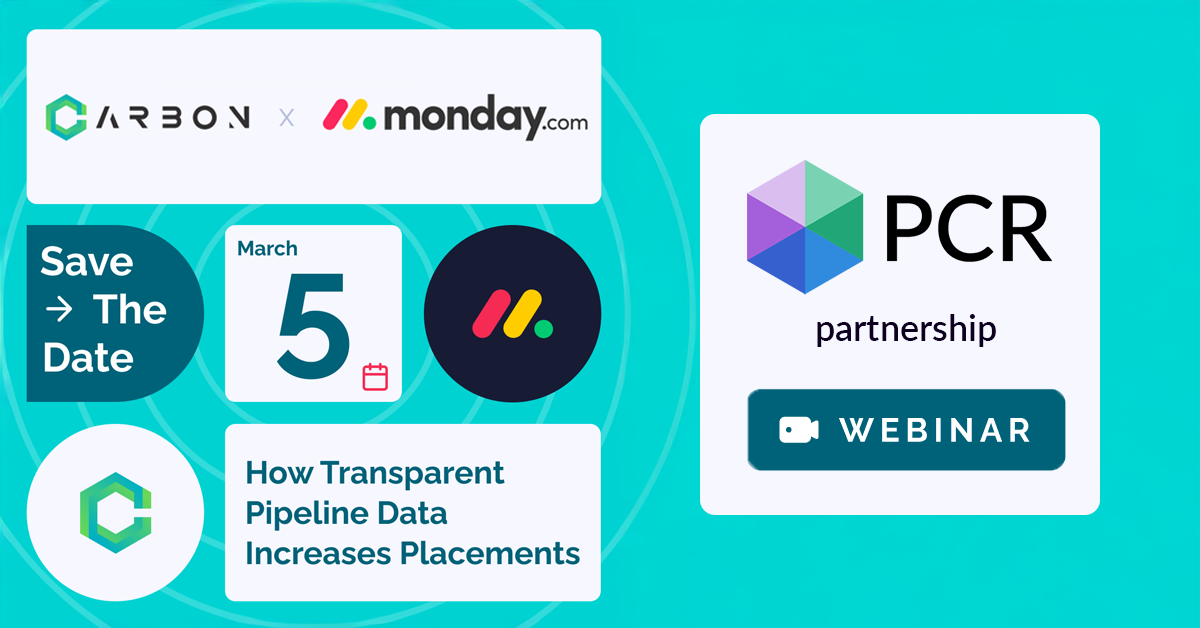In the world of inbound recruiting and staffing, your job descriptions are your primary content, and writing them should be done with search engines in mind. How can recruiters use SEO techniques to improve the chances of their job descriptions being discovered and shared online?
We spoke to Steve Gipson, Sales Manager at Recruiters Websites, and to PCRecruiter job board implementation guru Andrew Rothman, to find out more.
A search engine optimized job description is one which has been created using SEO best practices in order to increase its visibility on search results. This can help drive potential candidates to a recruiter’s website.
SEO is the practice of improving the visibility of websites and web pages in organic search engine results pages (SERP). While this can involve optimizing various aspects of the back-end, like the page title, meta title and meta description, the goal for the content on the front end is to provide the most relevant content for the user’s intent.
User intent can be broken into three categories: informational, navigational and transactional. Put simply: know, go and do. It determines what sort of content users are looking for. Here are three common examples of user intent in recruitment content:
The user is seeking information about a particular job role, career path or potential employer within a certain industry. Their search terms might include phrases like ‘what is’ or ‘how do I become’ or ‘where can I find’.
The user is looking for job postings from a particular company where they would ideally like to work. They’re likely to search using terms like the company name, their location and the word ‘careers’.
The user knows they want to apply for a specific job role and is seeking a way to begin that process. Their search terms might include words like ‘apply’ or ‘job application form’.
A search engine optimized job description will incorporate SEO fundamentals, relevant on-page content, and specific keywords to make it more visible to prospective candidates searching for a specific role within a specific industry, and in a specific location.
The job description itself is informational content, but when it forms part of a job posting that sits on a company website it also needs to meet the needs of navigational users looking for that specific role, as well as transactional users who already know they want to apply for it.
That’s why it’s important to include clear information with relevant industry and role keywords.

Studies show that 75% of people don’t go beyond the first page of the SERP. In other words, the majority of people won’t scroll past the first eight organic search results on Google. For job seekers, this means they largely end up on major sites like LinkedIn, ZipRecruiter, or Indeed. No matter how good your SEO practices are, an independent company or recruiting firm’s job listings are unlikely to out-rank the big guys because Google knows those sites are the most-clicked results. However, you can still help to raise your jobs above others for more granular searches.
And that’s where search engine optimized job descriptions come in. If your job posting lives on a web page on a company or recruitment website, and it’s been correctly optimized, it stands a much better chance of getting picked up through organic search.
While it’s good recruitment practice to combine SEO with paid advertising, organic search is the equivalent of free advertising.
Even if the role advertised is not exactly what the candidate was looking for, this might be the first time a speculative jobseeker has stumbled across your organization and/or the first time they’ve visited your website. This gives you a chance to really showcase your brand, and start to build a relationship with them.
There are many tried and tested techniques for SEO. With almost 86% of the search market, Google is the go-to source for most web searchers. Google’s algorithms determine which organic content ranks highest (beneath paid ads), so it’s important to follow the best practices to maximize the visibility of your job descriptions.
Here are nine techniques to help you optimize your job descriptions:
Putting the job title in the page title, and meta title of your page when possible, will help it get picked up by Google and give it a clear title when the page is shared. If you can, include the company name as well. The key here is to be clear and simple using common, unabbreviated industry terminology. Use the title phrasing that your jobseekers are likely to use.
When describing a specific role, you’re naturally going to include keywords associated with that particular role and industry. If you want to be more precise with what to include, take a look at a competitor’s top ranking job description from the search results and scan it for relevant words. Remember to use the phrases a job seeker might use when searching.
Repetition of a keyword phrase is important, to a point, but Google is increasingly good at prioritizing natural-sounding content. After all, a search engine’s success relies on the quality of results it returns, and nobody wants to be taken to a page they can’t make sense of. Simply repeating the same keyword or phrase over and over again can be detrimental. At most, aim for three mentions for every 400-500 words. And never employ trickery like hiding keywords in white text on a white background.
Like most human readers, Google finds it easier to read easily-digestible chunks of text. So it’s essential to break up your text using clear headings (H2s and H3s in SEO-speak) and bullet points. Your HTML editor will have tools for adding Headings. Try to keep your job description text clear and concise. Use bullet points for things like required experience or workplace benefits, but keep them short and sweet. Five bullets at a time is ideal. If you’re approaching double figures, you’ve gone too far.
A search engine that returns link after link to the exact same content is not going to be very useful! Job descriptions are no different. When Google finds the same job on multiple sites, their algorithm has to decide which one is the ‘most important’ – that’s likely the direct-hire employer’s own website, or a major job board site. By making sure that your job description isn’t too similar to any other, you increase the chances of it being found. This also applies to jobs within your own job board! If you have multiple job postings that are identical aside from the title or location, search engines are apt to ignore them, and may even down-rank your entire job board as a source of low-quality content.
Your prospective candidates are almost certainly using geographical location in their searches. By ensuring your job description contains relevant keywords such as the state, city, or county together with the job title, you’re in a much stronger position to be seen by candidates with a specific destination in mind. If you’re advertising a confidential opening, give as much location information as you can manage, or list the job with the nearest major city to get regional searchers.
Making connections is as important to SEO as it is to recruitment. A search engine cannot index what it cannot find, so more connections to and between jobs is beneficial. If you can, include relevant links to other parts of your website or to other jobs in your job descriptions, and use job boards and social media shares to make your links discoverable outside of your site.
A job description is a job description, but by simply embedding a short relevant video — either about your company or the role — you not only enhance your SEO, but also provide more appealing and engaging content to potential candidates. If you are using the PCRecruiter Job Board, talk to a rep about adding YouTube or Vimeo links to custom fields for display on your postings.
Ultimately, job postings are web content like any other page. When you think about it, a job description that’s been optimized for search engines is actually a job description optimized to properly engage potential hires. If you want your content to be appealing to Google, make it sure that it meets the user’s search intent.
PCRecruiter offers a flexible job board that you can use to easily frame your own positions inside of your website and to collect candidates directly into your talent pool. For larger volume job boards or more specific SEO requirements, talk to us about options for more advanced configurations.

The job of recruiting in 2025 is, to put it mildly, complex. Of course, you’ve still got the classic struggles of juggling open roles (many, if you’re lucky!), engaging with a constant stream of jobseekers, and striving to build lasting relationships with your clients. However, the modern recruiter also has to balance the need for efficiency and competitiveness with the fundamental human connections that underpin successful placements.
Read more
On Wednesday, April 2 our partner Quil will be co-hosting a webinar with us about their PCR integrated note-taking AI for recruiting teams. Register now!
Read more
PCR joins partners at CarbonWeb on March 5th at 1 PM EST for an exclusive webinar about the power of transparent pipeline data and how it can transform your recruiting efforts and increase your placements.
Read moreFind out more about who we and what we do.